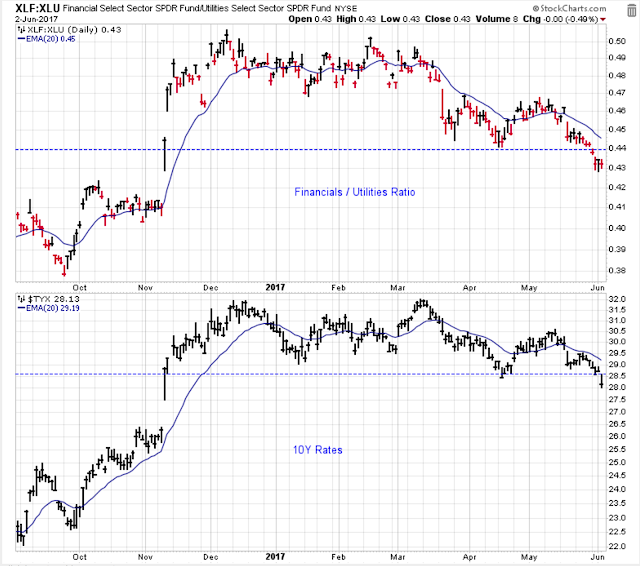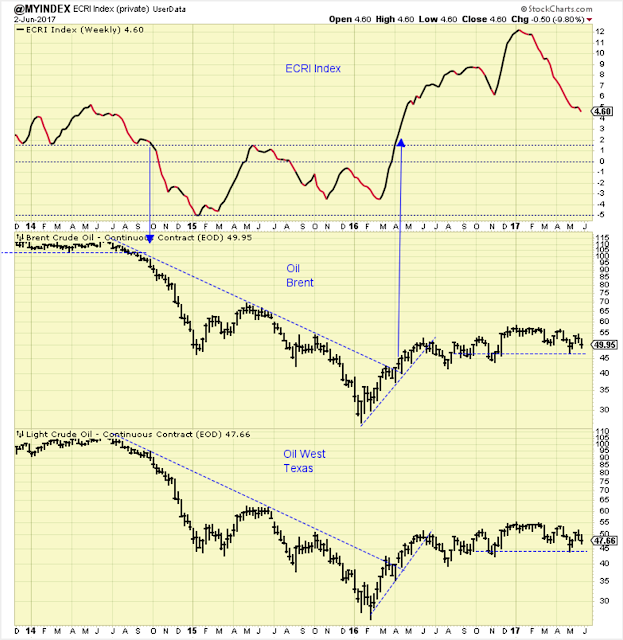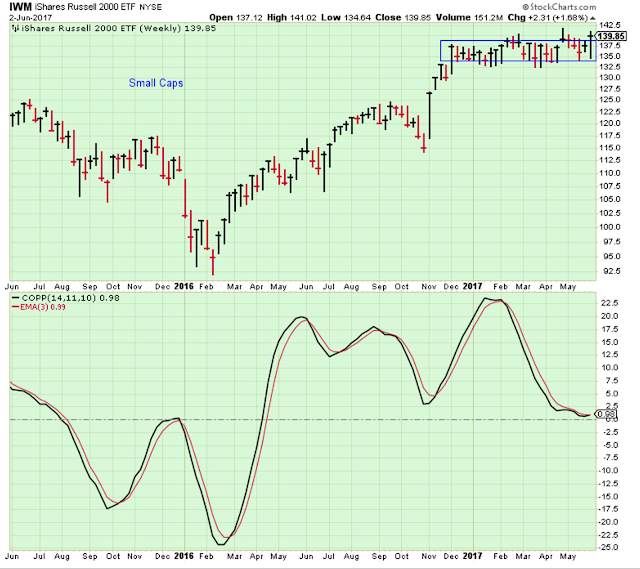The Longer-Term Outlook
The market really turned around this week. It felt significant because a number of important indicators were pointing to trouble in the market.
For me, the most important indicator was the elevated level of new 52-week lows which abruptly dropped down to the harmless range on Thursday and Friday.
Late in the trading session on Thursday, because of the drop in the level of new 52-week lows, I knew that I was on the wrong side of the market and that I had to quickly quit the bears and join the bulls.
The thing that really got people’s attention was the strength in small caps. Last week the small caps looked like they were finally going to break down. But it was just a test of the bottom of the range, and now they are back to testing the top of the range.
Small Caps were a bit weak into the close on Friday, so they have some work to do to prove that they are headed higher. For now, though, I think it was just enough that they proved that they weren’t breaking lower.

What also had people talking this week was the break down in longer-term rates. Friday’s session really shows that the current trend is lower for longer-term rates. I think it means that for the time being, bonds are back on the table as part of the investment mix if you are looking for capital gains.
In other words, until this trend breaks, both bonds and stocks will move higher at the same time. Most likely, we are back to a pre-election view of the economy in which GDP is uneven and weak, but continues to move higher overall.

The ECRI economic index took another hit this week. Last week, I thought it might start to stabilize.
Weak economic growth led to weak oil prices in 2015, and weak oil undermined the stock market to the point where it came very close a serious break down.
So we need to put oil prices back on the top of the list of factors to watch to measure the health of stock prices.

Outlook
The long-term outlook is positive, but watch for the signs of potential weakness.













Leave A Comment